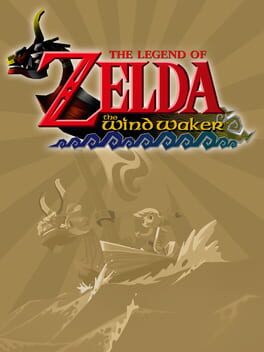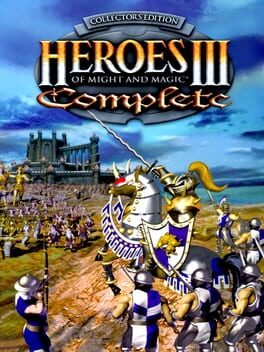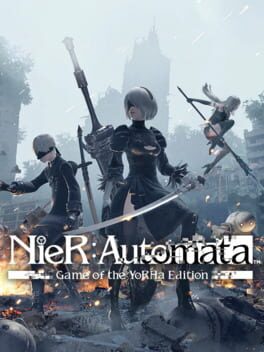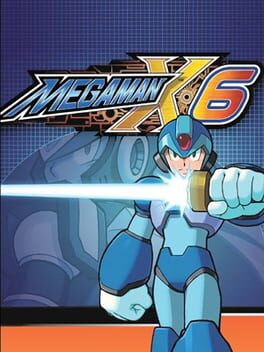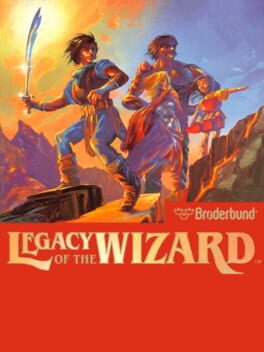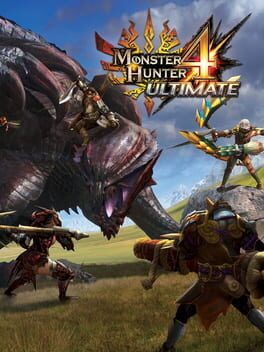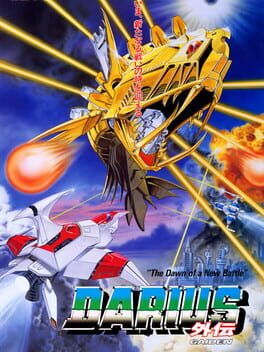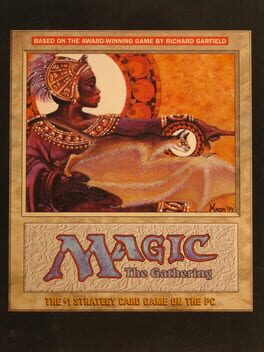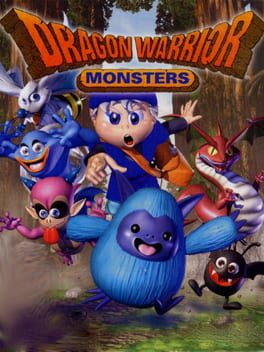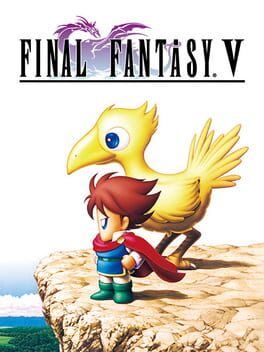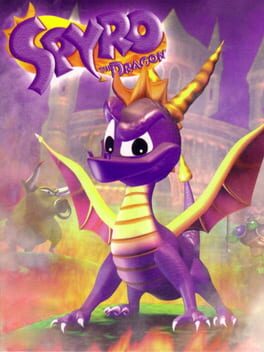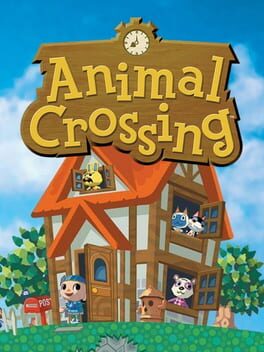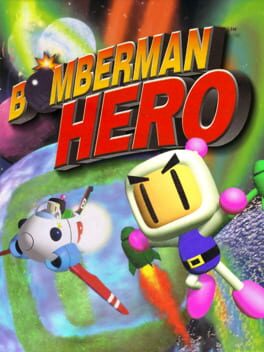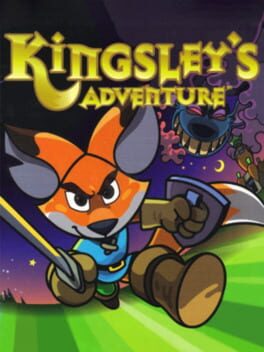bikko
I always thought it was a pretty smart idea filling all the empty traversal space with water, makes the game feel a lot larger than it most likely is, and really drives home a sense of adventure when you are out at sea, at least to me. It is easily my favorite Zelda game, even if some of the other titles come very close. I prefer this version as I don't really agree with the nerf to the triforce charts, as to me, this was a pretty evident indication that one should go out and explore the rest of the game and I never really had a lot of trouble making enough rupees to fund this section of the game. The Pictobox is also one of my most favorite features in the game and I had a lot of fun completing the models. If there is one thing I would change about this game, it's likely the duration it takes to convert photos into models as I think that introduced a lot of arbitrary waiting time/having to play the same song twice every time that could have otherwise been avoided.
I don't even like turn-based strategy games and I still somehow love this to death. It has a ton of cool factions with different units and cities for each that are beautifully presented, and is just a ton of fun. The music is great, too.
Definitely get it on GOG though, the "HD" version lacks a stupid amount of content and the original visuals still hold up today just fine, still wondering why they even bothered.
Definitely get it on GOG though, the "HD" version lacks a stupid amount of content and the original visuals still hold up today just fine, still wondering why they even bothered.
2021
Very fun Megaman X type touhou fangame with some great ideas and presentation. I enjoyed it a lot, despite my initial gut reaction of "oh this feels slightly off", it actually feels fine and ended up being a really pleasant surprise. The game particularly excels at the boss patterns in my opinion, they are all pretty inspired and make the survival boss rush mode pretty fun as well.
Nier Automata resonated with me a lot, and I like the characters and story very much. The game might not particularly stand out from a gameplay perspective, but I think the combat system is serviceable, and they did a great job at characterizing the different actors with their combat and gameplay mechanics reflecting their overall personality and nature. I also really enjoyed the setting, but I just have a soft spot for overgrown ruins and out of use industrial architecture. The opening sequence of the game is really great as well, doing a great job in introducing the world and its inhabitants. Something maybe a bit more minor, but what also stuck out to me, is the UI being tied closely to the character's sensory perception in that it appears to be diegetic, so a part of the world itself, which becomes pretty apparent when looking at how it takes up slots of memory alongside things like the combat enhancing chips. In an era where UI seems to get streamlined and designed to be as "legible" and bland as possible, I appreciate when a game not just adds thematic flourishes to its UI elements, but incorporates them into the game world and storytelling. I feel like they probably could have gone even crazier with it, but it's pretty cool as is.
If there are some shortcomings I personally have regarding the game, it's that the STG sections seem kind of overly easy and intended just as a neat cinematic thing, I think they could have expanded on it a bit more, but I guess ultimately it just helps to spice things up a little and likely would have been more of a deterrent for many if it did have more mechanical depth or challenge. Alongside the hacking minigames, it definitely didn't feel quite as fleshed out as the rest of the game, although I still thought it was cool.
Definitely worth a play, but likely a bit hit or miss in some respects, for me personally it was definitely one of the most captivating modern games I've played.
If there are some shortcomings I personally have regarding the game, it's that the STG sections seem kind of overly easy and intended just as a neat cinematic thing, I think they could have expanded on it a bit more, but I guess ultimately it just helps to spice things up a little and likely would have been more of a deterrent for many if it did have more mechanical depth or challenge. Alongside the hacking minigames, it definitely didn't feel quite as fleshed out as the rest of the game, although I still thought it was cool.
Definitely worth a play, but likely a bit hit or miss in some respects, for me personally it was definitely one of the most captivating modern games I've played.
2001
Megaman X6 is kind of an odd game and I feel like it tries to do a lot of cool things, even if not entirely successful, but my point in this review is really to illustrate why it is one of my favorite games. I've played through it a lot, often coming back for it on almost a yearly basis to give it another spin, usually playing it on "Xtreme" because I feel the extra difficulty makes the specific parts of the game I like work better than just playing it on normal.
I always viewed this game as an attempt to focus more on the exploration aspect of the franchise, and that is part of why I feel like this game has an almost "metroidvania"-like touch to it, although taking place within the basic established Megaman X structure. Every level has an alternate path to take, aside from just completing it normally, thereby making it clear that they anticipated that players would revisit levels and focus on seeking out what advantages they could. There is one deterrent in particular, but I'll get to that in a bit. The reason it reminds me of a metroidvania is moreso the parts, weapons, life upgrades and armors that you can collect and how they function in a way that enables you to access new things with the tools you have already found, whether this act of accessing is a matter of enabling it outright, or a matter of making it easier to reach. In comparison, the other Megaman X titles don't really require you to pick up anything in most cases, and can basically be beaten just going through the bosses, which is not a bad thing at all, and in some respects even commendable, but that's also why I think this game shines to me. I feel like it gives me way more reasons to use the kit I acquire, whereas in other MMX games I sometimes feel like I am just collecting things for the sake of having 100%, in this game I tend to prioritize stages to obtain specific tools I deem crucial to completing the game. I find this shift in item design is particularly apparent when looking at the first final stage of this game, Gate's Lab. The very first thing the scientist decides to bar your path with is to place a seemingly impossible to conventionally traverse spike wall in your way. And there are multiple solutions to tackling this problem, via different tools or the use of different parts, or armors. I personally really like this, because the final set of levels is also accessible extremely early in the game, thereby not requiring actually completing all the levels and leaving it to the player when they feel ready to engage, or if they are aware of certain tricks or methods to circumvent the barrier of entry.
I think the reploids/parts system helps encourage investigating every stage for tools to aid you in overcoming what the game throws at you, and this manifests especially when a certain section of a level is too tricky to get through (not to say that it isn't possible to for example pick Blaze Heatnix as your first stage). The saveable reploids in X5 seemed to me like an idea that never saw proper execution, but I think in this game they managed to make it pretty fun to try and save as many of them as you can, giving them items to reward you with. The caveat here is that they can permanently die via corruption by the nightmares, and I think this may constitute a grave offense to many. But when you just roll with it, I don't really think it's that bad. In a more arcade-like approach, this kind of thing doesn't seem like an issue, but I guess in the mindset of treating games as a one-and-done kind of activity in which 100% first time around is the expectation, it may be easy to find it annoying. In this regard, I feel like the nature of this game as a console game kind of works against what I think they were potentially aiming for, and that's a recurring problem I have with this franchise's exploration mechanics vs its identity as an action platformer. Many of the game elements seem to be laid out in a way to reward people who like to play through the game repeatedly by inviting to mix things up and try different approaches, while others lend themselves more to a progression-focused approach as is more typical with console games. Personally, I enjoy the extra stakes and have gotten pretty used to the more precariously placed reploids, although I would be lying if I didn't feel on edge when I try to save a couple of them and have ended many a run with less than 100% saved. However, none of the truly crucial reploids are usually at any risk of getting killed. A lot of them do not even have anything of value on them, but they still give the player a potential breather by granting some health and extra lives, the former of which can be particularly nice in Xtreme, as health pickups are otherwise very scarce and do not drop from random enemies. That being said, and this is the aforementioned deterrent, I actually have a bit of an issue with the extra lives, but that's mostly because of the fact that the game does not let you just exit levels anytime unless you have beaten the boss at the end of the stage. I think it would have been better to come up with an alternate method to withdraw from a level to further illustrate the more "finding tools" oriented gameplay the game seems to lend itself to, but there is the very real possibility that it was not really intended to be played like that. However, even then, Game Overs in this game are essentially meaningless, as lives are a commonplace currency and there is no real repercussion. They ultimately just get in the way of exiting levels, assuming you are stuck staring at High Max without the necessary tools to defeat him, which I would also consider a potential oversight. It feels more like a remnant of the franchise rather than something tailored to the game, but is ultimately not enough to deter me from enjoying the game.
Another noticeable evolution/offshoot of something previously found mostly in the first entry of the series, the nightmare system looks to me to be an attempt at introducing more routing variance to the game, trying to discourage players from following the most convenient route and serving as a sort of counterbalance to the player's increasing amount of power, making it a little bit trickier to route out the boss order. The first one or two levels you do will not have any nightmare effects whatsoever (it depends a bit on the sequence, and what nightmare effects you view depend on the levels you visit), therefore permitting you to get your bearings and pick up some stuff to help you weather the system kicking in. I don't really have any issues with the nightmare effects personally, and usually mostly route around the ones I struggle with based on my experiences and preferences, but I do appreciate it in terms of trying to make players alter what levels they may have picked otherwise.
If there is any main gripe I have about X6, it is probably bosses being a bit undertuned considering how strong some of the kit the players have is, with one notable exception being Infinity Mijinion, who I am particularly fond of (he has the cutest sound effects, too.) I think a lot of this is attributable to the rushed/intense development time the game had, and while it would have been nice to see how they would have balanced it given more time, gotta take what you get. There are some pretty cheesy methods and bugs you can employ to quickly delete bosses, but I think even aside from that the bosses could have been tuned up a little. The Xtreme difficulty at least mixes up the difficulty of the stages in that some of the easier stages in normal mode end up being far harder due to the increased damage taken, enemy health, placement and quantity. Having new moves for every boss in this difficulty is nice, too. I think to me, the big hurdle is in many cases the stage itself rather than the boss, and that is fine.
Story-wise, the game's unfortunate translation is in a way a charming reminder that this franchise has seemingly never been a particularly big budget endeavour as far as Capcom games go, and perhaps also kind of a blessing in that it retained the japanese voice acting over some kind of amateurish dub. There are some pretty well-known voice actors on board for X6, such as Norio Wakamoto also known from his role as Chiyo's Dad in Azumanga Daioh. In all honesty, looking at how they localized the previous two entries in the series I hardly blame them for cutting the costs and effort in this regard and do cut them some slack regarding the quality of the translation. I think it is apparent enough what the overall story is like from the cutscenes, even if there are some noticeable errors or strange miswordings that only become clearer when inspecting the japanese original text. For what it's worth, Gate as a villain is a nice departure, and I like the robots' designs having signature details like the head crystals, and I like their backstories. Alia also gets a surprising amount of characterization in her comments on the bosses you have retired, as well as featuring prominently in a bunch of cutscenes.
So, while this game is pretty flawed and a bit all over the place in terms of its balancing, I can't help but enjoy it, it really lends itself well to me as a player in particular and stands out to me from the rest of the X franchise as a result. I think the general reception this game has received from other reviewers and fans makes it pretty evident that it is far from everybody's cup of tea, but it absolutely is mine.
I always viewed this game as an attempt to focus more on the exploration aspect of the franchise, and that is part of why I feel like this game has an almost "metroidvania"-like touch to it, although taking place within the basic established Megaman X structure. Every level has an alternate path to take, aside from just completing it normally, thereby making it clear that they anticipated that players would revisit levels and focus on seeking out what advantages they could. There is one deterrent in particular, but I'll get to that in a bit. The reason it reminds me of a metroidvania is moreso the parts, weapons, life upgrades and armors that you can collect and how they function in a way that enables you to access new things with the tools you have already found, whether this act of accessing is a matter of enabling it outright, or a matter of making it easier to reach. In comparison, the other Megaman X titles don't really require you to pick up anything in most cases, and can basically be beaten just going through the bosses, which is not a bad thing at all, and in some respects even commendable, but that's also why I think this game shines to me. I feel like it gives me way more reasons to use the kit I acquire, whereas in other MMX games I sometimes feel like I am just collecting things for the sake of having 100%, in this game I tend to prioritize stages to obtain specific tools I deem crucial to completing the game. I find this shift in item design is particularly apparent when looking at the first final stage of this game, Gate's Lab. The very first thing the scientist decides to bar your path with is to place a seemingly impossible to conventionally traverse spike wall in your way. And there are multiple solutions to tackling this problem, via different tools or the use of different parts, or armors. I personally really like this, because the final set of levels is also accessible extremely early in the game, thereby not requiring actually completing all the levels and leaving it to the player when they feel ready to engage, or if they are aware of certain tricks or methods to circumvent the barrier of entry.
I think the reploids/parts system helps encourage investigating every stage for tools to aid you in overcoming what the game throws at you, and this manifests especially when a certain section of a level is too tricky to get through (not to say that it isn't possible to for example pick Blaze Heatnix as your first stage). The saveable reploids in X5 seemed to me like an idea that never saw proper execution, but I think in this game they managed to make it pretty fun to try and save as many of them as you can, giving them items to reward you with. The caveat here is that they can permanently die via corruption by the nightmares, and I think this may constitute a grave offense to many. But when you just roll with it, I don't really think it's that bad. In a more arcade-like approach, this kind of thing doesn't seem like an issue, but I guess in the mindset of treating games as a one-and-done kind of activity in which 100% first time around is the expectation, it may be easy to find it annoying. In this regard, I feel like the nature of this game as a console game kind of works against what I think they were potentially aiming for, and that's a recurring problem I have with this franchise's exploration mechanics vs its identity as an action platformer. Many of the game elements seem to be laid out in a way to reward people who like to play through the game repeatedly by inviting to mix things up and try different approaches, while others lend themselves more to a progression-focused approach as is more typical with console games. Personally, I enjoy the extra stakes and have gotten pretty used to the more precariously placed reploids, although I would be lying if I didn't feel on edge when I try to save a couple of them and have ended many a run with less than 100% saved. However, none of the truly crucial reploids are usually at any risk of getting killed. A lot of them do not even have anything of value on them, but they still give the player a potential breather by granting some health and extra lives, the former of which can be particularly nice in Xtreme, as health pickups are otherwise very scarce and do not drop from random enemies. That being said, and this is the aforementioned deterrent, I actually have a bit of an issue with the extra lives, but that's mostly because of the fact that the game does not let you just exit levels anytime unless you have beaten the boss at the end of the stage. I think it would have been better to come up with an alternate method to withdraw from a level to further illustrate the more "finding tools" oriented gameplay the game seems to lend itself to, but there is the very real possibility that it was not really intended to be played like that. However, even then, Game Overs in this game are essentially meaningless, as lives are a commonplace currency and there is no real repercussion. They ultimately just get in the way of exiting levels, assuming you are stuck staring at High Max without the necessary tools to defeat him, which I would also consider a potential oversight. It feels more like a remnant of the franchise rather than something tailored to the game, but is ultimately not enough to deter me from enjoying the game.
Another noticeable evolution/offshoot of something previously found mostly in the first entry of the series, the nightmare system looks to me to be an attempt at introducing more routing variance to the game, trying to discourage players from following the most convenient route and serving as a sort of counterbalance to the player's increasing amount of power, making it a little bit trickier to route out the boss order. The first one or two levels you do will not have any nightmare effects whatsoever (it depends a bit on the sequence, and what nightmare effects you view depend on the levels you visit), therefore permitting you to get your bearings and pick up some stuff to help you weather the system kicking in. I don't really have any issues with the nightmare effects personally, and usually mostly route around the ones I struggle with based on my experiences and preferences, but I do appreciate it in terms of trying to make players alter what levels they may have picked otherwise.
If there is any main gripe I have about X6, it is probably bosses being a bit undertuned considering how strong some of the kit the players have is, with one notable exception being Infinity Mijinion, who I am particularly fond of (he has the cutest sound effects, too.) I think a lot of this is attributable to the rushed/intense development time the game had, and while it would have been nice to see how they would have balanced it given more time, gotta take what you get. There are some pretty cheesy methods and bugs you can employ to quickly delete bosses, but I think even aside from that the bosses could have been tuned up a little. The Xtreme difficulty at least mixes up the difficulty of the stages in that some of the easier stages in normal mode end up being far harder due to the increased damage taken, enemy health, placement and quantity. Having new moves for every boss in this difficulty is nice, too. I think to me, the big hurdle is in many cases the stage itself rather than the boss, and that is fine.
Story-wise, the game's unfortunate translation is in a way a charming reminder that this franchise has seemingly never been a particularly big budget endeavour as far as Capcom games go, and perhaps also kind of a blessing in that it retained the japanese voice acting over some kind of amateurish dub. There are some pretty well-known voice actors on board for X6, such as Norio Wakamoto also known from his role as Chiyo's Dad in Azumanga Daioh. In all honesty, looking at how they localized the previous two entries in the series I hardly blame them for cutting the costs and effort in this regard and do cut them some slack regarding the quality of the translation. I think it is apparent enough what the overall story is like from the cutscenes, even if there are some noticeable errors or strange miswordings that only become clearer when inspecting the japanese original text. For what it's worth, Gate as a villain is a nice departure, and I like the robots' designs having signature details like the head crystals, and I like their backstories. Alia also gets a surprising amount of characterization in her comments on the bosses you have retired, as well as featuring prominently in a bunch of cutscenes.
So, while this game is pretty flawed and a bit all over the place in terms of its balancing, I can't help but enjoy it, it really lends itself well to me as a player in particular and stands out to me from the rest of the X franchise as a result. I think the general reception this game has received from other reviewers and fans makes it pretty evident that it is far from everybody's cup of tea, but it absolutely is mine.
1987
One of the reasons that some games appeal to me is that they can be little worlds I get to explore, and this is very much the case here. Probably one of the best getting lost simulators on the entire system. I am not sure I would recommend this game for a "playthrough" as much as I would recommend it for the experience or the journey of playing it, regardless if one gets invested enough into the game to finish it or not. If you have fun with it, finish it. Makes sense, really.
I clocked over 700 hours in this on my 3DS. It's very very good and packed full of things to do, with tasteful nods to older games in the series like the inclusion of Dundorma/Dondruma from MH2, all the while still having it's own thing going on. Gore Magala might be one of my most favorite monsters in the franchise, alongside other great fights like Molten Tigrex, and several other things that appear later in the game that I do not intend to spoil. The weird randomly generated quest system that they added alongside all of this is a bit hit or miss, but I liked being able to get differently designed armor pieces with good skills like Honed Blade+3 on them permitting me to make some pretty cool looking sets even back then when most people ran around in clown suits. For me, I always enjoyed trying to push the most useful skills onto my gear while still retaining a sort of cohesion to it visually, and this may be the last game in the series where this feels somewhat doable without just outright slapping "layered armor" on (which doesn't yet exist in this game), although I am unsure as I did not get as much mileage out of generations.
The biggest issue I think is that the game is on a handheld. I personally always preferred console Monster Hunter due to the larger screen better reflecting the scale of the monsters, and the nice audio design in the older titles like MH1-3. I was also not a huge fan of mounting, but it is up to you how much you want to use it. The new verticality 4th gen introduced is pretty great, otherwise! Additionally, the control scheme on this one is kind of unfortunate unless you happen to have either a New 3DS or a Circle Pad Pro, the latter of which I used for this game and would highly recommend. I've always insisted on manual camera control in these games regardless of how awkward my hand had to be positioned to do so, but the analog stick being ontop of the dpad on the 3ds just made it outright impossible for me without the use of the circle pad. The game also lagged a bit for me when playing with more than 2 players on the original 3DS hardware, so I generally stuck to playing with just one friend at a time, or alone. The village content in this game is actually pretty good for solo play, providing a method of playing some high rank or G rank content alone before venturing into the gathering hall to do the rest, although you could obviously also just do that as with practically any monster hunter game.
The biggest issue I think is that the game is on a handheld. I personally always preferred console Monster Hunter due to the larger screen better reflecting the scale of the monsters, and the nice audio design in the older titles like MH1-3. I was also not a huge fan of mounting, but it is up to you how much you want to use it. The new verticality 4th gen introduced is pretty great, otherwise! Additionally, the control scheme on this one is kind of unfortunate unless you happen to have either a New 3DS or a Circle Pad Pro, the latter of which I used for this game and would highly recommend. I've always insisted on manual camera control in these games regardless of how awkward my hand had to be positioned to do so, but the analog stick being ontop of the dpad on the 3ds just made it outright impossible for me without the use of the circle pad. The game also lagged a bit for me when playing with more than 2 players on the original 3DS hardware, so I generally stuck to playing with just one friend at a time, or alone. The village content in this game is actually pretty good for solo play, providing a method of playing some high rank or G rank content alone before venturing into the gathering hall to do the rest, although you could obviously also just do that as with practically any monster hunter game.
1994
1997
By far the best digital MTG game. Offering a rare slice of MTG history, you can play with lots of old sets in a randomly generated world, acquiring new cards to keep evolving your deck as you do quests for villagers to get a chance at more cards! It's very addictive and highly replayable, and doesn't try to empty your wallet. The AI in this game can be a bit schizo sometimes and some of the old rules might throw some people off, like not being able to mulligan unless you meet certain requirements, mana burn, damage going on the stack, etc. Still absolutely hilarious that you can build actual stax decks and horrendously broken stuff in this though, even if it is not always advisable considering you probably don't wanna spend 30 minutes on every single encounter.
The only caveat is that it is kind of tricky to find a version of the game that runs well on modern PCs nowadays, I remember having quite a bit of trouble with it. I much prefer this over modern day MTG offerings and would like them to make more stuff like this that isn't a games-as-a-service money milking machine.
The only caveat is that it is kind of tricky to find a version of the game that runs well on modern PCs nowadays, I remember having quite a bit of trouble with it. I much prefer this over modern day MTG offerings and would like them to make more stuff like this that isn't a games-as-a-service money milking machine.
Intensely addictive monster breeding game. In comparison to games like Pokemon, you generally don't tend to directly control your monsters, although there is an option to do so. But Monster personality is pretty important in this one, and there's quite a lot of nuance to breeding decent monsters with inheritable skills, monster personality depending on tendencies, secret breeding combinations, etc. Whenever I boot this up I feel like I could go on playing it for hours, used to play it in transit sometimes. Highly recommended.
1992
I've played through this game more often than I can count, and I love coming back to it. It's a lot of fun challenging yourself to do runs with different setups, my favorite is probably Blue Mage only. The game offers a lot of customization and exploration of its mechanics thanks to the job system that allows players to mix and match abilities across different jobs to create potent combinations. To append this, the equipment in this game can do very unique things as well, from status effects, to absorption, to procs on weapons and upgrades to abilities and the like. The story is also very memorable, perhaps because of how bizarre the opening section is. The Playstation version has a very amusing translation that has many silly enemy names and Faris talking like a pirate for the entire game. I think my favorite way to play this game is likely the Super Famicom version with a translation patch. The recent remake doesn't really appease me as it was very buggy when I tried it, and the savestate system diminishes the enjoyment of the tension the game has when you traverse between save points.
1998
2001
This game moreso than any other AC game really kinda nails the atmosphere for me. I love the cliffs, the pond, the train station and the police station, the light house and many other things about the village in this game, some of which have since departed from sequels or been replaced. This game is from an era before the franchise really incentivised hoarding and using the game as an interior (now also exterior) designing tool, where if you find something new it really does feel kind of cool. Villagers have a lore more volatile personalities and can even scam you out of money if you are unfortunate enough to be carrying too much around thanks to their crafty little games, and can even be outright rude, which makes them feel a lot more believable than the infinitely repeating meaningless phrases uttered in later titles (I would say, starting with New Leaf). I think this game still has a lot to offer, but it may be difficult to unlearn some of the more modern animal crossing habits and gameplay features for some.
1998
This game is a pretty big departure from the usual Bomberman title being more of a platformer of sorts, but I find its strange worlds and enemies very compellingly designed. The soundtrack by Jun Chikuma is amazing, featuring cool 90s era breakbeat and electronic music, that I've often listened to outside of playing the game. It might feel a little sluggish to some in part also due to the questionable framerate issues, but that never deterred me from enjoying it.
1999
Atmospheric little game with great soundtrack and tank controls. I'll always have a soft spot for it. The difficulty abruptly spikes a few levels in and the game kind of rapidly concludes itself after that, leading me to believe that maybe they ran out of time or budget and had to wrap things up, to this day I have no idea. Still a lot of fun to play, though, even if the last actual "level" might test your patience, it is a fun journey. Love recommending this to people only to watch them stream themselves get mercilessly filtered by stage 4.
